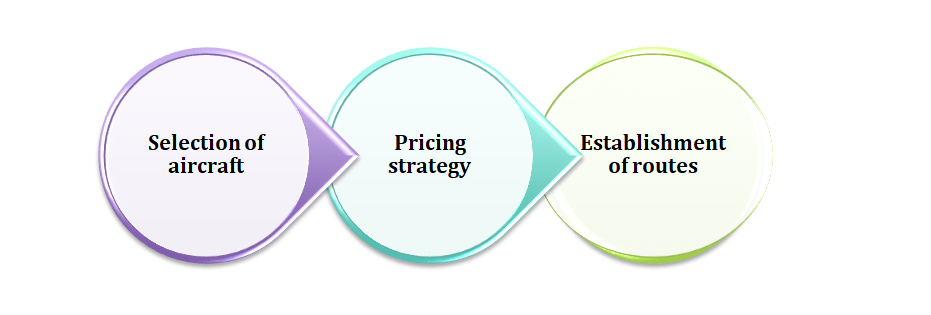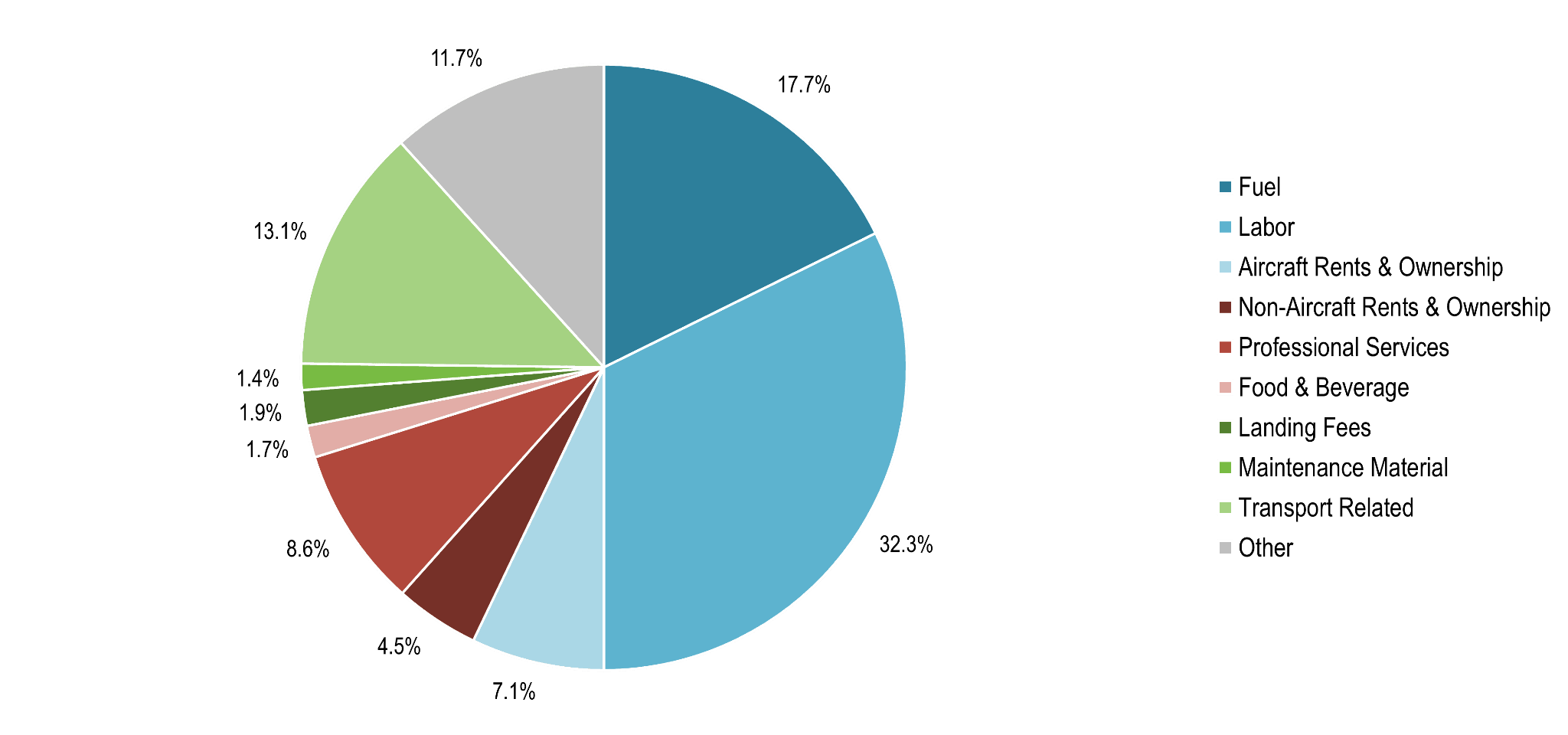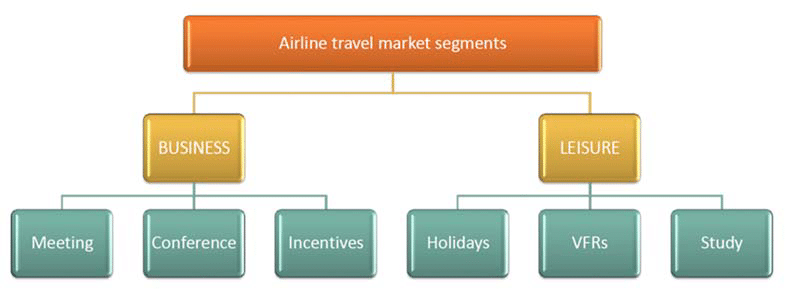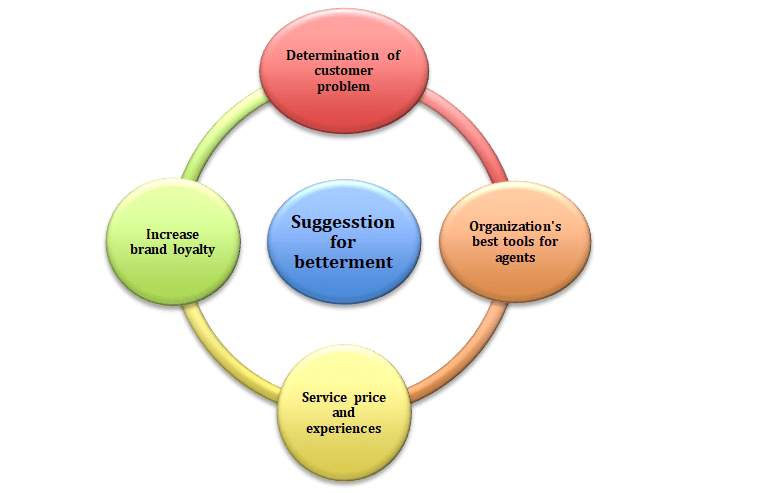Critical Assessment Of The Key Concepts In Airline Operations
1.0 Introduction: Critical Assessment Of The Key Concepts In Airline Operations
In search of reliable assignment writing help in the UK? Visit no other website than Native Assignment Help for assistance. We provide free case studies and have professional writers who are experienced and very knowledgeable in writing perfect assignments that meet the highest academic standards as you succeed academically.
Airline operation is one of the most successful and significant fields in the business industry. In this work, the airline operation in terms of point to the pint operation and the hub operation need to be discussed and demonstrated in this manner. On the other hand, the pricing strategy and rate of demand of the passengers have to be illustrated about the airline operation. The specific routes of the airline need to be mentioned and addressed to enhance the quality of this work. Moreover, the concept of market segmentation has played an effective role in the business. In this case, the approaches of market segmentation need to demonstrate to enhance this operation. Moreover, the retention strategies for the market or passengers have to be illustrated in gaining a better perspective on the operation of the airline. The limitation of the airline operation has to be assessed and addressed in this manner. On the other hand, some suggestion for the betterment of this aviation process has to be generated to enhance the airline strategies.
2.0 Background
The airline operation has been included with the selection of aircraft, making a proper pricing strategy, the establishment of routes, and making an eruption of demand trend for the betterment of operation structure (Andrew et al. 2019). The concept of a hub airport is the name provided to this airport which those airlines use outside of their headquarters. The word hub has been recognized as a term that makes the connectivity between two airports (Boukoberine et al. 2019). On the other hand, it can also provide higher frequency, good access, and greater Hub to maintain well operational structure (Cummins, 2021). Besides, the concept of a point-to-the-point system has also been used in the airline industry. This point-to-the-point method of the airline has been termed a line network or direct network.

Figure 1: Different aspect of airline operation
In general, this is an effective model by which the flights have been operated between two cities directly, regardless of the distance (Fu et al. 2020). With the use of point, the pint hub system money can be saved up to 30% due to the direct flight without the stopover. Specifically, as per the selection of the aircraft, five areas have to be emphasized namely: consideration of the designing characteristics, maintenance needs, operating economics, physical performance, acquisition cost, etc. (Gholikhani et al. 2020). In addition, the operators of the flights have been included with several factors of flight playing, dispatching concept, provision of the weather data, flight watch, ground to the air level communication, operations control, overall integration with schedules, crew, and the maintenance planning, etc. (Hosseini et al. 2019). Moreover, the concept of gate allocation, ATC, slot control, and the operational management of the airports have been covered in this case.
3.0 Discussion
3.1 Airline operation
Pricing strategy
Most of the airline industries have used a comparative pricing strategy in the global competitive market. This organization has aimed to make low prices compared to its competitors in the market (Li et al. 2019). There are several other competitors of this airline have been prevalent in this manner. In this way, the airline industry has been associated with low prices and high-quality assessments (Mallam et al. 2020). The pricing strategy of this organization has been recognized as highly sensitive to demand in the market. On the other hand, this low price has affordability to their clients or customers (Nguyen et al. 2019).

Figure 2: cost of airline passengers
The customers have been included in the upper middle to the high class of passengers, influential personalities and business professionals, etc (Qadir et al. 2021). This evaluation industry offers a level of six prices to its customers. With this pricing strategy, this industry has aimed to ensure making the value of the money spent (Rajendran and Srinivas, 2020). With this six-level and comparative price strategy, this airline operation has gained huge success in the global competitive market in maintaining high quality.
Demand trends
2 years after exiting debt relief, the airline industry has been focusing on expanding in India, which has overtaken the pre-Covid era to become the third-largest customer for such a British airline internationally (Sahoo et al. 2020). India did not appear in the top five in the previous two to three years the previous two or three decades, India did not even make the top 5. Virgin operates 3 trips every week between Mumbai and Delhi to London, limited because of its capability and mutual traffic rights (Singamneni et al. 2019). This airline is considering adding more trips, not just to these two major cities but also to more major Indian cities (Straubinger et al. 2020). In the last year, this airline industry has signed an agreement of a codeshare with the largest carrier of Indigo in proving the connectivity with Bengaluru, Chennai, Hyderabad, Ahmedabad, Kolkata, Goa, and Amritsar. In this way, the demands of this airline have been rising to every city at a global range.
Routes
In the business field of airline operation there is great significance has been found in the context of agreeing and deciding on the routes (Zhang et al. 2021). For the selection of routes, the airline industry has used software and special tools for data analysis in terms of evaluation of passenger demand in creating possible routes. The route selection has been depending on the climatic or weather condition also (Zhang et al. 2020). It includes several factors like mileage, cost of the over-flight permit,m wind direction conditionals class. Different types of routes in flight planning have been consulting direct, navaid, and airway. A specific route might be composed of various segments of several routing types (Science direct, 2023). As per the example, a significant route from “Chicago to Rome” has included routing of the airway across Europe and the US, but it is directly routing across the Atlantic Ocean. In this process, with the proper use of software, tools, and techniques the routes of the airline have been generated in this manner.
4.0 Results and analysis
Approaches of the market segmentation
The marketing segmentation of the airline organization has been aimed at setting, evaluating, and implementing marketing strategies to fulfill the needs and wants of their clients (Cornell.on.worldcat, 2023). In this case, various approaches have been found in the airline industry like demographic approaches, behavioral approaches, psychographic approaches, geographic segmentation, etc. In this process, the airline industry has gained profit and sustained in the business market. Furthermore, the concept of marketing metrics has been sued in measuring entire business performance (Andrew et al. 2019). The airline companies have been categorized based on passenger or business logistics. This approach has been further classified into non-scheduled and scheduled services.

Figure 3: Marketing segmentation approach
As per the pricing strategy, low-cost behaviors have been the main aim of the airline operation in recent periods (Boukoberine et al. 2019). In general, most airline organization has been sued to provide 3 flying classes such as first class, economy class, business class, etc (Cummins, 2021). For example, the company of virgin Atlantic recently suffered from a downturn in the economy. Even there are several other industries has been prevalent which have been suffering from political, economic, or legal challenges (Fu et al. 2020). In this case, significant travel policies need to be implemented in the context of market segmentation. On the other hand, the airline industries have been able to provide some segmentation like maintaining “loyal to loyalty”, business travelers, urgent travelers, and budget conscious.
Market/ passenger retention strategies
The retention strategy for the passenger in the airline industry has an effective and significant role in this manner (Gholikhani et al. 2020). This retention strategy has boosted the entire productivity and promoted a high level of engagement. In this process, the revenue can be flourished largely (Hosseini et al. 2019). In this airline operation, there are some specific retention strategies have been found such as the application of customer accounts, beginning f a client loyalty program, making a rate of the discount facility by first purchase, establishing a referral program, improvement of customer support, providing engaging emails to their clients, collection of passenger feedback and finally offering of personalized shopping performances, etc (Li et al. 2021). The concept of retention strategy has been able to promote success and health in the airline organization. Even high employees of airline operations have got turnover regarding multiple issues which include high cost, low productivity, and loss of knowledge, etc (Mallam et al. 2020). In this way, the main objectives of the retention process are to make turnover as less as possible. It can also focus on making customers in the stage of departing from this company. Even, this strategy has been associated to maintain healthy relationships among existing customers instead of making the focus on new customers.
Limitations
In the airline business, various challenges or limitations have been found that cause the matter of accidents (Nguyen et al. 2019). This limitation has consist of airspeed, loading and weight distribution, powerplant, and flight. The limitation of airspeed has been shown over the airspeed indicator with the use of graphs or placards or the use of color coding in this aircraft. Those are the limitations of airspeed in aircraft.
The limitation has also been seen in air transportation. The airline operation has used fuel energy, which is why it is costly compared to other modes of transportation (Qadir et al. 2021). On the other hand, this airline operation has a limited capacity. It has more pollution effect than that of other transport or vehicles like electric vehicles.
Besides those limitations, structural limation can be found in this operational airline. It has been observed in the context of compartment payroll, floor loading, and linear loading scenarios (Rajendran and Srinivas, 2020). Restrictions and rules have been recognized as the limation or changes of this organization.
5.0 Recommendation
Determination of customer problem
On the flight, there are various kinds of passengers have been found. The problems of seating allocation, food issues, and health and safety issues can be seen in this manner (Sahoo et al. 2020). Those issues have to be reduced by taking pepper implantation plain in the airline industry.
Increase brand loyalty
Most upper-class customers have been influenced by brand loyalty. In this case, the flight organization needs to maintain loyalty to its customers. Good services have to be provided in achieving the loyalty of their passengers. On the other hand, the rules and regulations should be maintained in the operational behavior of the airlines.

Figure 4: Suggestion for improvement of airline industry
Service price and experiences
The airline industry should give more emphasis on the low pricing strategy with maintaining the high quality of services to their passengers or customers (Singamneni et al. 2019). The demand of the customers’ needs to be fulfilled in achieving a better experience of the airline operation.
Organization's best tools for agents
For better services, the industry has to focus on making online tickets, and airline websites. POS solutions need to be flourished in terms of online check-in of tickets and selling purposes (Straubinger et al. 2020). Even, flight dispatch and scheduling, and pilot management need to be implemented in a better way. In this field, the fix-based operator should be used for better management.
6.0 Conclusion
In this work, the entire operational strategy of the airline operation has been discussed and demonstrated in this field. The concept of point-to-the-point and hub operation has been demonstrated in this case. On the other hand, the pricing strategy management, routes of the airlines, and demand perspective of the clients or passengers have been also assessed and discussed in this manner. The importance of market segmentation has been discussed in the operational strategies of airlines. Moreover, the retention strategies for the passengers in the market have been also demonstrated in this manner. There is some limation of this airline operation have been addressed and illustrated to enhance the quality of this work. The suggestion can be effective for the betterment of this airline's operation in further. In this way, the concerto of the airline's operational structure has been described and discussed briefly.
Reference list
Book
Cornell.on.worldcat, 2023, Airport marketing: strategies to cope with the new millennium environment Available at: https://cornell.on.worldcat.org/oclc/60312561 [Accessed on: 27.2.23]
Journals
Andrew, J.J., Srinivasan, S.M., Arockiarajan, A. and Dhakal, H.N., 2019. Parameters influencing the impact response of fiber-reinforced polymer matrix composite materials: A critical review. Composite Structures, 224, p.111007.
Boukoberine, M.N., Zhou, Z. and Benbouzid, M., 2019. A critical review on unmanned aerial vehicles power supply and energy management: Solutions, strategies, and prospects. Applied Energy, 255, p.113823.
Cummins, J., 2021. Rethinking the education of multilingual learners: A critical analysis of theoretical concepts (Vol. 19). Multilingual Matters.
Fu, L., Gao, F., Wu, J., Li, R., Karkee, M. and Zhang, Q., 2020. Application of consumer RGB-D cameras for fruit detection and localization in field: A critical review. Computers and Electronics in Agriculture, 177, p.105687.
Gholikhani, M., Roshani, H., Dessouky, S. and Papagiannakis, A.T., 2020. A critical review of roadway energy harvesting technologies. Applied Energy, 261, p.114388.
Hosseini, N., Jamal, H., Haque, J., Magesacher, T. and Matolak, D.W., 2019, March. UAV command and control, navigation and surveillance: A review of potential 5G and satellite systems. In 2019 IEEE Aerospace Conference (pp. 1-10). IEEE.
Li, Y., O'Neill, Z., Zhang, L., Chen, J., Im, P. and DeGraw, J., 2021. Grey-box modeling and application for building energy simulations-A critical review. Renewable and Sustainable Energy Reviews, 146, p.111174.
Mallam, S.C., Nazir, S. and Sharma, A., 2020. The human element in future Maritime Operations–perceived impact of autonomous shipping. Ergonomics, 63(3), pp.334-345.
Nguyen, T., Lim, C.P., Nguyen, N.D., Gordon-Brown, L. and Nahavandi, S., 2019. A review of situation awareness assessment approaches in aviation environments. IEEE Systems Journal, 13(3), pp.3590-3603.
Qadir, Z., Ullah, F., Munawar, H.S. and Al-Turjman, F., 2021. Addressing disasters in smart cities through UAVs path planning and 5G communications: A systematic review. Computer Communications, 168, pp.114-135.
Rajendran, S. and Srinivas, S., 2020. Air taxi service for urban mobility: A critical review of recent developments, future challenges, and opportunities. Transportation research part E: logistics and transportation review, 143, p.102090.
Sahoo, S., Zhao, X. and Kyprianidis, K., 2020. A review of concepts, benefits, and challenges for future electrical propulsion-based aircraft. Aerospace, 7(4), p.44.
Singamneni, S., Yifan, L.V., Hewitt, A., Chalk, R., Thomas, W. and Jordison, D., 2019. Additive manufacturing for the aircraft industry: a review. J. Aeronaut. Aerosp. Eng, 8(1), pp.351-371.
Straubinger, A., Rothfeld, R., Shamiyeh, M., Büchter, K.D., Kaiser, J. and Plötner, K.O., 2020. An overview of current research and developments in urban air mobility–Setting the scene for UAM introduction. Journal of Air Transport Management, 87, p.101852.
Zhang, J., Campbell, J.F., Sweeney II, D.C. and Hupman, A.C., 2021. Energy consumption models for delivery drones: A comparison and assessment. Transportation Research Part D: Transport and Environment, 90, p.102668.
Zhang, X. and Mahadevan, S., 2020. Bayesian neural networks for flight trajectory prediction and safety assessment. Decision Support Systems, 131, p.113246.



